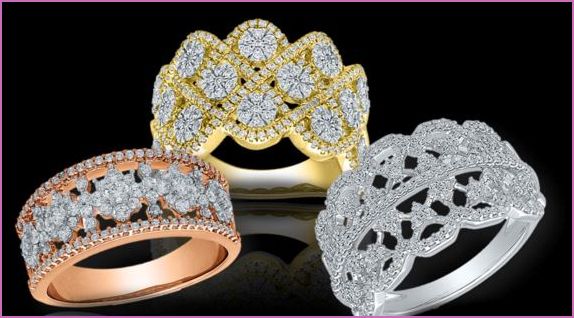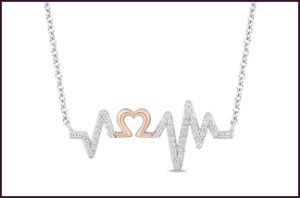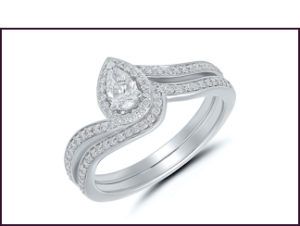Jewelers Set Tone for Earth & Lab Diamonds to Coexist
It’s all about what the customer wants.
When it comes to earth-mined and lab-grown diamonds, David Arnold, general manager of Daniel’s Jewelers in Killeen, Texas, is bullish on his customer’s decision.
Displaying his loose diamonds, earth-mined and lab-grown, side-by-side and well-labeled, with trained staff, Arnold wants his customers to choose what they want and feel good about it. “That’s the aha-moment,” he describes. “Letting your customers decide with their pocketbook, social awareness, or whatever inspires them to say yes to something.”
Arnold opted to have them coexist so his customers would get the full breadth of diamonds. “So, when they look at me, and how relaxed I am with it, that this is just another product that conveys their emotions, customers are more comfortable considering all the options.”
He said that when he explored other stores with lab-grown diamonds in a separate case, wondering why they weren’t selling, he believed they were just getting in their way. “By putting lab-grown diamonds in a separate case, the customer gets the impression that they are ‘other’ rather than incorporating them into the diamond category,” says Arnold. “Having everything on equal footing, presented with equal importance, is the best way to introduce it.”
Accepting lab-grown diamonds has been an evolution in the jewelry industry. “When I first got into this business so many years ago, I’m handling items that are $10,000, $15,000, $20,000 wondering, I can’t afford this, how can I sell it,” Arnold says. “That evolution of accepting it and being able to sell it translates into everything new that comes along. So, when lab-grown diamond comes up, it’s a reality. We can’t turn back. We have the technology. We either get on board or get out of the way.”
Arnold encourages jewelers to step around the counter and put themselves in the consumer’s spot, figure out what they want to know about, and say yes to what they want, not what’s comfortable for them.
Jewelers are in the love and emotions business, underscores Marty Hurwitz, CEO of MVI Marketing (MVEye), which released consumer and trade research regarding lab-grown diamonds last October. “It doesn’t matter what consumers have assigned that emotion to; jewelers have to profit from it; that’s the goal. Hanging on to just one product that sells love may not be a good idea. Present consumers with choice, present both mined and lab-grown diamonds, and make money with the products they value and see as love.”
Given the rapidly changing dynamics and emergence of new growers and brands, the current market size for lab-grown diamonds is difficult to assess. But Hurwitz estimates lab-grown diamonds may account for 5 percent of the market share of gem-quality diamonds today, noting that it has a long way to go to even reach the 15 percent of diamond market share Bain & Co., in its ninth annual Global Diamond Report, predicts it will by 2030.
Below or Above Ground
Roopam Jain, president of the branded division for Jewelmark in New York City, thinks there is a place for lab-grown diamonds in both the bridal and fashion diamond categories but emphasizes that it depends significantly on how jewelers present the products. “Do you prefer diamonds from underground or above ground,” he asks. “A gift from the earth or science?”
An advocate for brands, Jain underscores the importance of sales training to interpret what a brand stands for and give sales associates a simple way to translate that one to three key things to relate to customers. “Keep it simple and focus on what the guest is there to do; buy a gift to make someone happy.”
Russell Weisenberg, vice president of sales for Aneri Jewels in New York City, which cuts and polishes both earth and lab-grown diamonds, is bullish on natural diamonds, reporting that consumers continue to buy them in wedding rings and wardrobe staples, even through the pandemic. But he also recognizes lab-grown diamonds as an emerging market, which is popular with younger generations of jewelry consumers and cannot be ignored. “The more we’re talking about diamonds in general, the better for everyone in our industry.”
Echoing that sentiment, Arnold finds presenting lab-grown diamonds to his younger clientele easier than those celebrating their 25th anniversary.
But that’s okay. It’s all about what the customer wants.
“Lab-grown diamonds certainly have their place in the market, and I’m sure that we will see much more of them as manufacturing becomes more efficient,” says Valerie Fletcher, vice president of design and product development for Original Design Inc. (ODI). “A natural diamond born a billion years ago, 100 miles below the earth’s surface, is probably the most extraordinary thing I will ever own. There’s an inherent value to that, especially in the bridal market.”
“The key to the continued success of natural diamonds is in promoting ethical, sustainable business practices and positively impacting communities and the environment,” Fletcher continues. “As part of the Tache Group, which is a DeBeers sightholder, ODI is a strong advocate of natural diamonds.”
The natural diamond industry has stepped up its investment to empower and enrich communities, protect the environment, and promote gender equality and inclusivity, and is actively engaging about it. The Natural Diamond Council and its diamond-producing members have supported the United Nations Sustainable Development Goals.
As the emphasis on responsible and ethical production grows, and with diversity and inclusion high on the agenda of Millennial and Gen-Z consumers, brands/jewelers are well advised to incorporate transparency, authenticity, and purpose as a crucial part of their strategy for all their diamond products.












